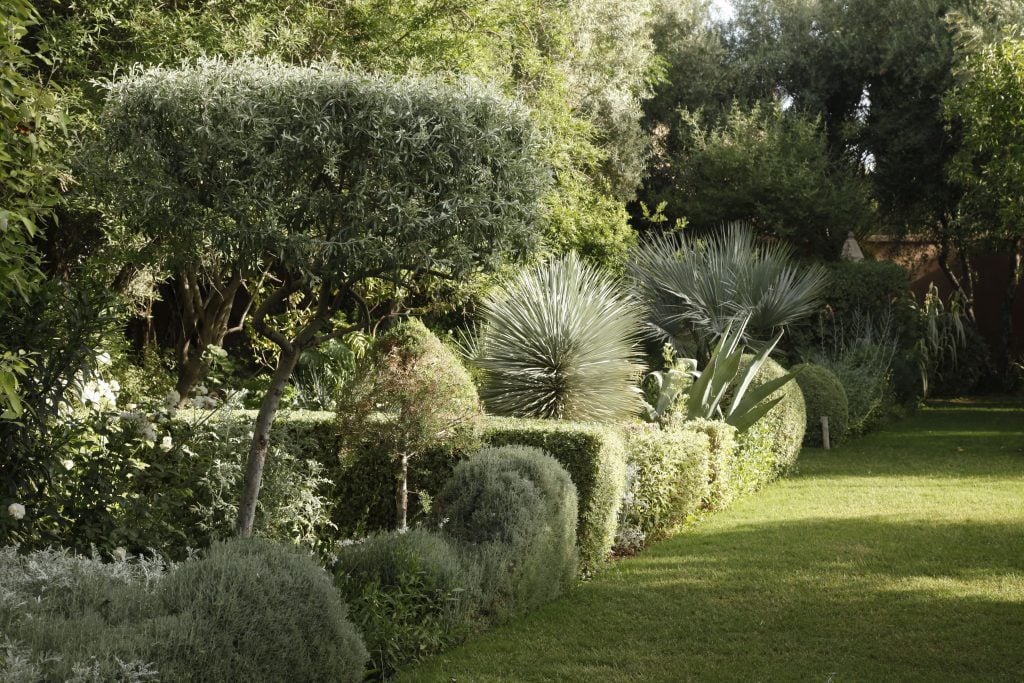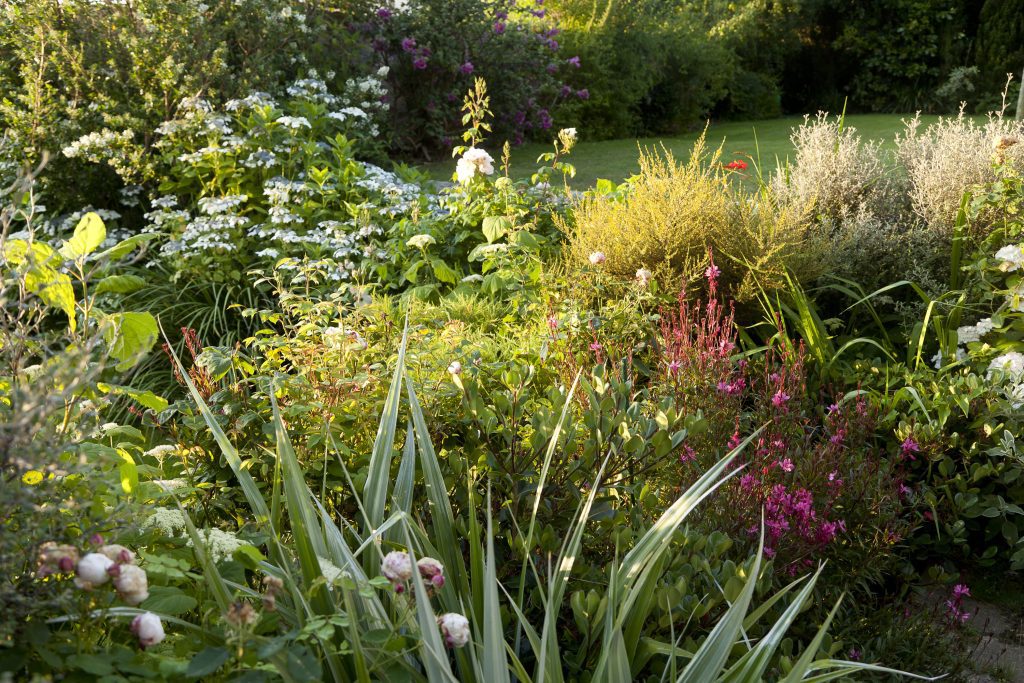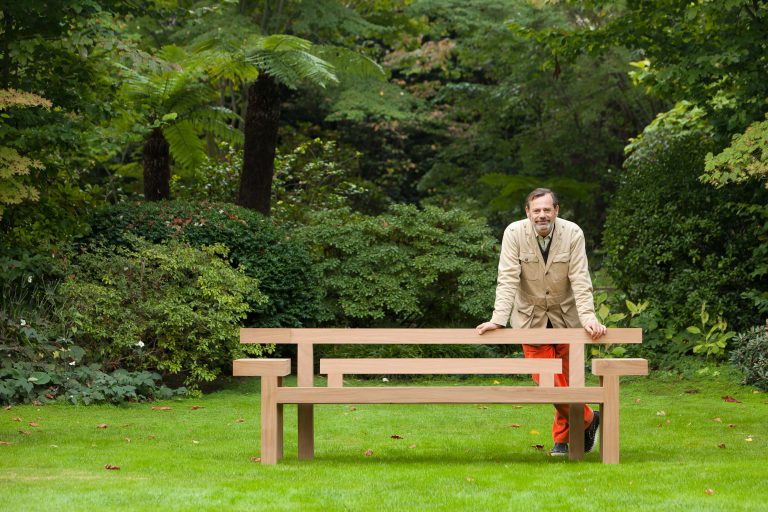Louis Benech, a lover of plants and nature with an eye for design, has had the privilege of working on some of the world’s most renowned gardens. These include the Elysée Gardens and Quai d’Orsay in Paris, the rose pavilion at Pavlovsk in Saint Petersburg, the Achilleion gardens in Corfu, and the restoration of André Le Nôtre’s area of the Tuileries Gardens, which he worked on alongside Pascal Cribier and François Roubaud. Recently, in the garden at Versailles, he created Bosquet Du Théâtre D’Eau in a similar vein to Le Bosquet de Bains d’Appolon, which Hubert Robert designed for King Louis XVI in Le Nôtre’s original Petit Parc. We had the pleasure of speaking with the French landscaper about gardens and their relationiship to art, time, and religion.

Dar Ahlam—Skoura Palm Grove, Morocco, 2004
Photography by ERIC SANDERS

Garden looking out on Saint-Servan, 2006
Photography by ERIC SANDERS
hube: The garden is an example of creative cooperation between man and nature. A garden pretends to be nature, a garden argues with nature; a garden is both the worship of nature and its subjugation. How would you explain your dialogue with nature? How does it work?
Louis Benech: It’s a relationship between man and nature. However, when you create a garden, it’s totally artificial, so, in my head, it’s clear that it’s not natural. Nevertheless, nature is a huge inspiration in my work, even on my own land, and nature is even more important when I’m working abroad with plants that are not my “native” plants. I need the maximum knowledge about how things work in a place. For instance, I always use plants that are native to the place that I am working in, whether that is the US, New Zealand, Korea, or Spain. I love being inspired by the way things are in each place. Using the plants you find around you is a way of being rational and responsible in your work. From there, I always try to add a bit of seasoning, if you will, by adding ex otic non-native plants. Except for historical places, I’m not a fan of such visual aesthetics, but I find beauty in how these plants blend together.
In 19th century Europe, some exotic seeds started growing. You can see them when you drive in the French countryside, cedars and sequoia trees are good examples. When you see these, you know there is a bigger house in the centre of these trees because they were planted more than a century ago and they reflect older trends.
If I have to work in such a place, I’ll try to reuse elements that match the site and its life. Because even though the formal Le Nôtre style of garden is genius, and I’m not saying that just because I’m French, he analysed the landscape before planting anything. He opened his garden to the general landscape, while most Renaissance gardens in central Europe—except in a few places in Italy where you had views and the houses dominated the landscape—were enclosed by walls. The desire for the outside wasn’t visual, it was to be protected from bigger animals, or from people. But Le Nôtre opened his paysages on to the landscape. He used the natural geography [of a place] as a backdrop to his perspectives. He knew perfectly well how to transform levels, how he could tell a story through a landscape composed of “the nature” of his well-groomed composition and “the nature” of the wild.
h: A garden is a dynamic structure. It constantly interacts with light, rain, wind, changing seasons, and the cyclical process of life, death, and rebirth. It is closely related to time. This feeling must be vitally important for you, could you tell us about your relationship to time?
LB: My relation to time is very important. I’m always in a hurry. Nowadays, people want bigger plants, bigger trees to be planted in their new places. To that, I always reply that if you adopt children, would you adopt them when they’re 55 or three weeks old? Some people just don’t understand that a garden is connected to life. I imagine it small, and I picture it growing. I’m old enough to have seen the garden in which I planted seeds that have now grown into trees. When you plant an adult tree in a garden, it always looks small in comparison to other mature trees that have been there for a longer amount of time. Planting is never about the size. If you plant bigger trees, they won’t move at normal speed because of the age they were when they were transplanted. When they are transplanted bigger, the root system isn’t the same; they might be more fragile, more liable to fall down if there is a storm. Having said that, time is also money in people’s heads and it’s true. In my opinion, it is nonsense to try to rush such things, it goes against nature. A tree planted in good condition when it is small will always grow taller and, to my eyes, faster than the same species of tree planted when it is big.

